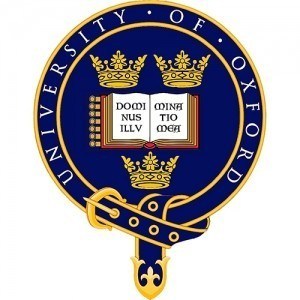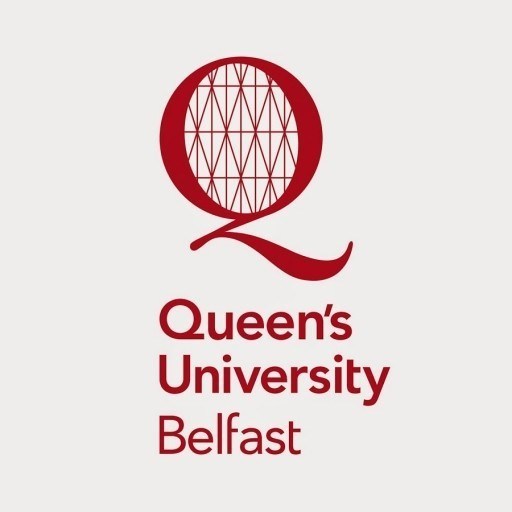Photos of university / #uni_southampton
The Ceramic and Lithic Analysis for Archaeologists programme at the University of Southampton offers advanced training for professionals and students interested in the detailed examination and interpretation of archaeological artifacts, specifically ceramics and lithic materials. This programme provides a comprehensive understanding of the techniques used in the analysis of pottery and stone tools, emphasizing both methodological approaches and theoretical frameworks. Students will engage in hands-on laboratories, learning to identify raw materials, manufacturing techniques, usage patterns, and chronological aspects of artifacts through various analytical methods such as petrography, materials characterization, microstructure analysis, and typological classification. The course integrates archaeological theory with scientific techniques, enabling students to interpret material culture within broader cultural and historical contexts.
Participants will also explore the application of modern technologies such as scanning electron microscopy (SEM), X-ray fluorescence (XRF), and other non-destructive analysis tools to uncover detailed information about artifact composition and production techniques. The programme aims to develop not only technical skills but also critical interpretative abilities, helping students to contribute meaningful insights to archaeological research, cultural heritage management, and museum curation. The curriculum includes lectures, seminars, practical sessions, and research projects, fostering a dynamic learning environment. Graduates will be equipped to work in archaeological excavations, museums, research institutions, and conservation agencies, contributing to our understanding of past human activities through ceramic and lithic artefact analysis. Overall, this programme prepares students with a unique blend of scientific expertise and archaeological knowledge, essential for advancing research in archaeological material analysis.
The Ceramic and Lithic Analysis for Archaeologists programme at the University of Southampton offers comprehensive training in the scientific examination and interpretation of ceramic and lithic materials in archaeological contexts. This programme is designed to equip students with essential skills in laboratory analysis, artifact identification, and data interpretation, enabling them to contribute meaningfully to archaeological research and heritage management. Throughout the course, students explore the methodologies used in the analysis of ceramics, including petrography, chemical characterization, and typological classification, which help to determine the provenance, production techniques, and chronological frameworks of ceramic artefacts. Similarly, the programme covers lithic analysis, focusing on raw material sourcing, technological assessment, and use-wear studies, vital for understanding prehistoric human behavior and technological development.
Students will gain hands-on experience with advanced analytical techniques such as X-ray fluorescence (XRF), scanning electron microscopy (SEM), and other non-destructive methods that provide detailed compositional and microstructural data. The curriculum also emphasizes archaeological context, encouraging students to integrate laboratory results with site stratigraphy, typological studies, and historical records to develop a holistic understanding of past communities. The programme is suitable for those seeking careers in archaeological laboratories, museums, cultural resource management, or academic research.
The course combines lectures, practical workshops, and field visits to archaeological sites or collections, fostering a thorough understanding of both theoretical principles and applied techniques. Additionally, students are encouraged to undertake independent research projects, which may involve the analysis of actual archaeological samples, contributing to ongoing research initiatives within the university. With its multidisciplinary approach, the programme not only enhances technical skills but also strengthens critical thinking and interpretative capabilities essential for archaeological professionals. Upon graduation, students will be well-equipped to undertake detailed ceramic and lithic analyses, support archaeological excavations, and contribute to scholarly publications, thereby advancing our understanding of past human activities through material culture.
The Ceramic and Lithic Analysis for Archaeologists program at the University of Southampton is designed to provide students with a comprehensive understanding of the scientific techniques used to analyse ceramic and lithic materials within archaeological contexts. The program aims to equip students with both theoretical knowledge and practical skills necessary to interpret archaeological findings through material analysis. Core modules include introductory courses on archaeological science, material characterization techniques, and specific training in ceramic petrography, compositional analysis, and lithic technology. Students will learn to operate advanced analytical equipment such as X-ray fluorescence (XRF), scanning electron microscopy (SEM), and petrographic microscopes, gaining hands-on experience in sample preparation, data collection, and interpretation. The program emphasizes interdisciplinary approaches, integrating archaeological theory with scientific methodologies to enable accurate reconstruction of ancient human behaviors related to pottery production, usage, and discard patterns, as well as lithic fabrication techniques. Coursework involves case studies, laboratory experiments, and fieldwork components, often collaborating with museums and archaeological projects. Assessment methods include practical assignments, written examinations, project reports, and a dissertation where students demonstrate their ability to carry out independent research. Entry requirements typically include a bachelor's degree in archaeology, anthropology, materials science, or a related field. The program prepares graduates for careers in archaeological science, museum curation, cultural heritage management, and academic research. It also fosters skills in scientific communication, teamwork, and project management, essential for professional development in the heritage sector. The duration of the program is generally one year for full-time students and up to two years part-time, allowing flexibility for working professionals. Overall, the program combines rigorous scientific training with archaeological applications, enabling students to contribute significantly to the understanding of past human societies through material analysis.
Funding for the Ceramic and Lithic Analysis for Archaeologists programme at the University of Southampton can be obtained through various sources including governmental grants, university scholarships, and external funding bodies. Students are encouraged to explore options such as the UK Research Council funding, which offers scholarships for postgraduate archaeological research, particularly for UK and EU students. The university itself provides several scholarships and bursaries aimed at supporting students in archaeology and related fields, which can significantly offset tuition and living costs. Additionally, international students may be eligible for specific scholarships designed to promote diversity and international collaboration within the university community.
Furthermore, students enrolled in this programme may have access to funded research assistantships or teaching assistant positions, which provide a stipend and sometimes tuition fee waivers. These opportunities are often awarded based on academic merit and relevance of research interests, and they also offer valuable practical experience in archaeological analysis. Some students may also secure external funding from archaeological foundations, heritage bodies, or private sector organizations interested in supporting archaeological sciences.
The programme's structure supports students in developing project proposals and grant applications, enabling them to pursue independent research funding during their studies. It is advisable for prospective and current students to regularly consult the university’s scholarship portal and research funding office for the latest funding opportunities, application deadlines, and eligibility criteria. Overall, whilst the exact financing options depend on individual circumstances and nationalities, the University of Southampton strives to provide comprehensive financial support pathways for students committed to advancing their expertise in ceramic and lithic analysis within archaeological contexts.
The Ceramic and Lithic Analysis for Archaeologists program at the University of Southampton offers students an in-depth exploration into the analytical techniques used to study ancient ceramics and stone artefacts. This program is designed for archaeology students and professionals seeking specialized skills in material analysis to enhance their understanding of past cultures. The curriculum integrates both theoretical foundations and practical laboratory skills, with a strong emphasis on the scientific methods used in compositional analysis, stylistic studies, and technological reconstructions. Students are trained in various analytical techniques such as X-ray fluorescence (XRF), petrography, scanning electron microscopy (SEM), and other non-destructive and destructive methods suitable for ceramic and lithic materials.
Throughout the course, learners have the opportunity to engage with real archaeological samples, enabling them to develop proficiency in preparing specimens, conducting analyses, and interpreting data within archaeological contexts. The program also covers the cultural and historical significance of ceramic and lithic remains, emphasizing how material analysis contributes to archaeological interpretation, provenance studies, trade networks, and technological development. Collaborative projects and research-based assignments encourage critical thinking, problem-solving, and effective communication of scientific findings to interdisciplinary audiences.
This program is ideal for those aiming to pursue careers in archaeological research, museum curation, cultural heritage management, or archaeological consultancy. Students benefit from access to state-of-the-art laboratory facilities and expert guidance from faculty experienced in archaeological sciences. The course may also include fieldwork components, providing practical experience in archaeological excavation and sample collection, complemented by laboratory analysis. Overall, the Ceramic and Lithic Analysis for Archaeologists program prepares graduates to apply scientific techniques to archaeological materials, thereby contributing valuable insights into past human behaviors and material culture Dynamics.







